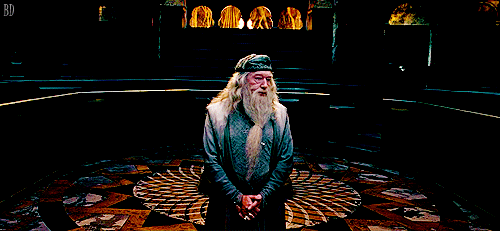There are a ton of character types in any given story. The key is learning how to use your characters intentionally, especially a static character. Nobody wants a story in which all the characters never grow and change, but they also don’t want one where characters are all flawed and lacking.
The balance is important, and that requires fully understanding the options at your disposal and the role each can play in a story.
If you’re going for a certain affect with your writing, you’ll want to be aware of all the ways you can accomplish it. Which is why I’m going to walk you through the details of what a static character is, how to best use it, along with examples and a how-to guide for writing them.
Here’s what you’ll learn about static characters:
What is a static character?
A static character is one who undergoes little or no inner change or growth during the course of a story, meaning they don’t have an arc and often remain the same as the story progresses.
Unlike dynamic characters who experience significant personal development, static characters maintain their core traits, beliefs, and behaviors from the story’s beginning to its end. While they may encounter challenges and conflicts, their fundamental nature remains unchanged.
Where to Put a Static Character in Your Book
The role of a static character can change greatly because they don’t have an arc that needs completing. This usually just means that this character will have specific plot types if they’re the main character and certain characteristics if they’re not the main character.
It’s often a good idea that if your main character is dynamic (and therefore grows and changes through the plot) to put them with another character who is static. Not all the secondary characters have to be static, but if you have too many characters to grow with only one plot, it can get complicated to keep track of and write in a realistic way.
A good example of this would be the mentor archetype in a story. They’re often a static character who guides the main character on their own journey.
If you want the main character to be a static character, that would alter the kinds of plots you’ll have in your story. The plot itself for these books will rely less on your main character growing and changing and more on circumstances outside the character.
Books that do this well are often serialized plots: a static character has a similar role in each standalone book and the plots are often similar in nature. Examples of this would be mystery books, spy thrillers, detective novels, etc.
It just depends on what kind of story you want to tell!
Examples of Static Characters & the Plots They Work Well In
There are static characters in so many beloved stories. While we may not be used to seeing them as the main characters, there are definitely cases where they are!
Here are examples to learn form and how, specifically, they’re static characters.
1. Sherlock Holmes in Arthur Conan Doyle’s Sherlock Holmes series
The brilliant detective Sherlock Holmes is a classic example of a static character. Across the various mysteries he solves, Holmes maintains his keen intellect, logical reasoning, and detached demeanor. His unwavering characteristics are a key part of the series’ enduring appeal.
In some variations of this character, we see that he does have an arc. But the original Sherlock Holmes stays the same for the most part, and continues to solve crimes.
2. Atticus Finch in Harper Lee’s To Kill a Mockingbird
Atticus Finch is a moral compass in Lee’s classic novel. Throughout the story, he remains steadfast in his commitment to justice and integrity, providing a stable presence for his children in the face of societal turmoil. Atticus serves as a guiding force, maintaining his principles despite the challenges around him.
He’s a great example of a sort of mentor archetype in a story.
3. Hannibal Lecter in Thomas Harris’s The Silence of the Lambs
The iconic antagonist Hannibal Lecter is a static character known for his consistent sophistication, intelligence, and chilling demeanor. Despite the unfolding events, Lecter remains an enigmatic and unchanging figure, adding an element of suspense and unpredictability to the narrative.
4. Dumbledore in the Harry Potter series
If you know the story, you know Dumbledore is a steady, guiding force for Harry and the entire wizarding world, really. He doesn’t change much, if at all, throughout the entire series. The entire time, he’s a highly capable, experienced wizard who consistently shows up and provides guidance and answers when needed.
Of course, Dumbledore is also a mentor archetype in these books, so it makes sense he’s a static character.
What should be obvious about all of these examples of static types in books is that they likely have already developed and become who they are as a result of their backstory. Sometimes those backgrounds get written—like with The Ballad of Songbirds and Snakes, a Hunger Games prequel of President Snow. Other times, they don’t and the character just remains as the static character.

Write Interesting Static Characters That Readers Still Love
A lot of what readers end up loving about a character is how they grow and change—who they become—during the course of the book. But you can still write lovable characters who are static.
Here’s how.
1. Establish Clear Traits
Define the core traits of your character early on. Whether it’s a strong moral code, unwavering courage, or a specific personality quirk, clarity is key to maintaining consistency. Just don’t choose too many.
I like to think of these specific traits as guiding beliefs, and choose three of them. What are the three guiding beliefs that this character goes through life with?
Make one about themselves. One about others. And another about the world as a whole. When you have those beliefs, writing their character comes much more easily, and you have a base for all the decision that character makes (and the traits that go with those beliefs).
2. Connect Thematically
Ensure that the static character’s traits align thematically with the broader narrative. Their unwavering qualities should contribute to the story’s message or central themes. Take Dumbledore for example.
A huge theme in the Harry Potter stories is the idea that good will conquer evil. Dumbledore himself is a thematic representation of good, including all the complexities that goes into that. The benefit of a static character is the fact that they’re unwavering, which makes it easy to maintain the theme throughout the story.
3. Create Contrast
Use static characters strategically to create contrast with dynamic characters. The static character’s unchanging nature can emphasize the growth and transformation of other characters in the story.
One of the ways this works is with a trait you want to emphasize in the main character, like a flaw, weakness or strength. Take the opposite of that, and give that trait to the static character. Placing these two character next to each other, with conflicting traits, will highlight both of their traits in ways that furthers the progression of the main character’s arc.
4. Utilize Supporting Roles
While the main character might undergo change, static characters in supporting roles can provide stability and continuity. Consider how their unchanging nature complements the overall narrative arc. This could be a case where the main character hates the static character for a while.
That is, until the main character realizes they need to work with and learn from the static character. This could serve as a really powerful plot device to move the story forward.
5. Challenge Without Changing
Present challenges and conflicts that test the static character’s beliefs or principles, but resist the temptation to fundamentally alter them. The power of a static character lies in their resilience against external pressures. This tip is specific to when you use a static character as your main character.
Part of what can make the character interesting other than an arc is actually throwing whatever you can at them, and keeping their behavior consistent. This doesn’t mean it’ll be easy for this character to do, but it will make for an interesting read when you work out how the static character will think through and solve challenges without compromising themselves.
Characters, whether dynamic or static, are core pieces of writing a good novel. They’re just not the only part of it. Learn more about the overall process of writing a quality book and how you can use character and plot together to make a satisfying read by watching this free class:
